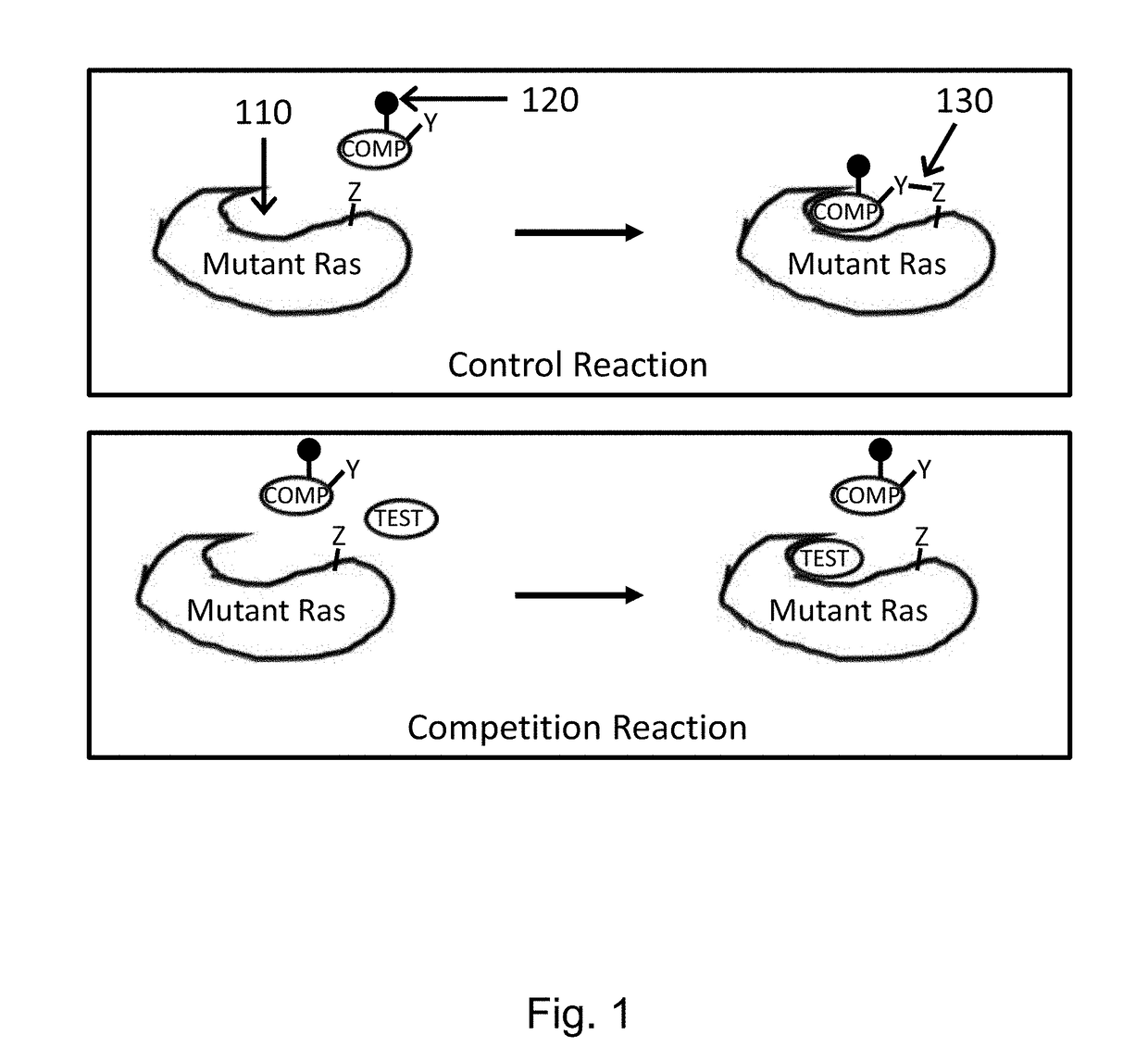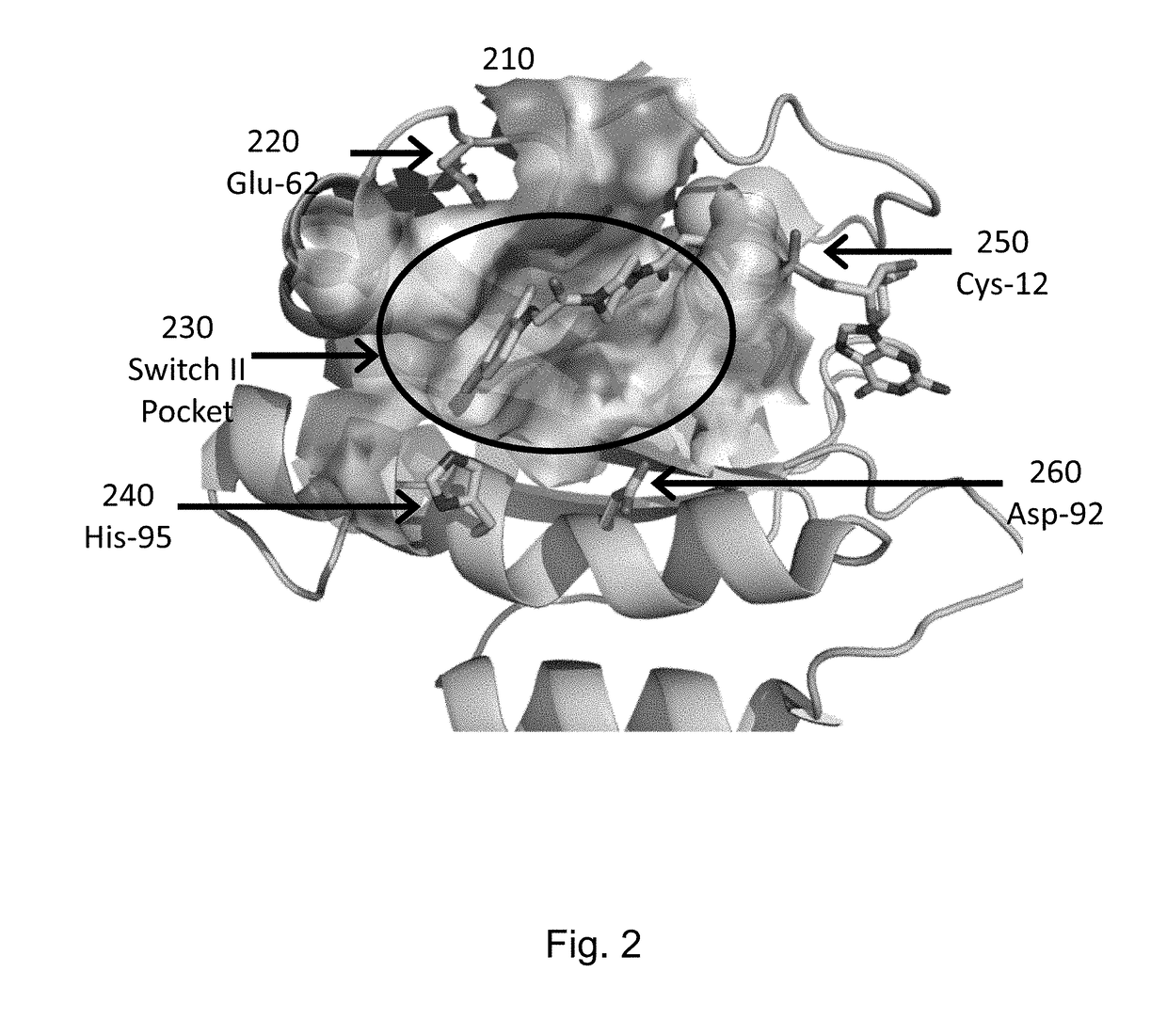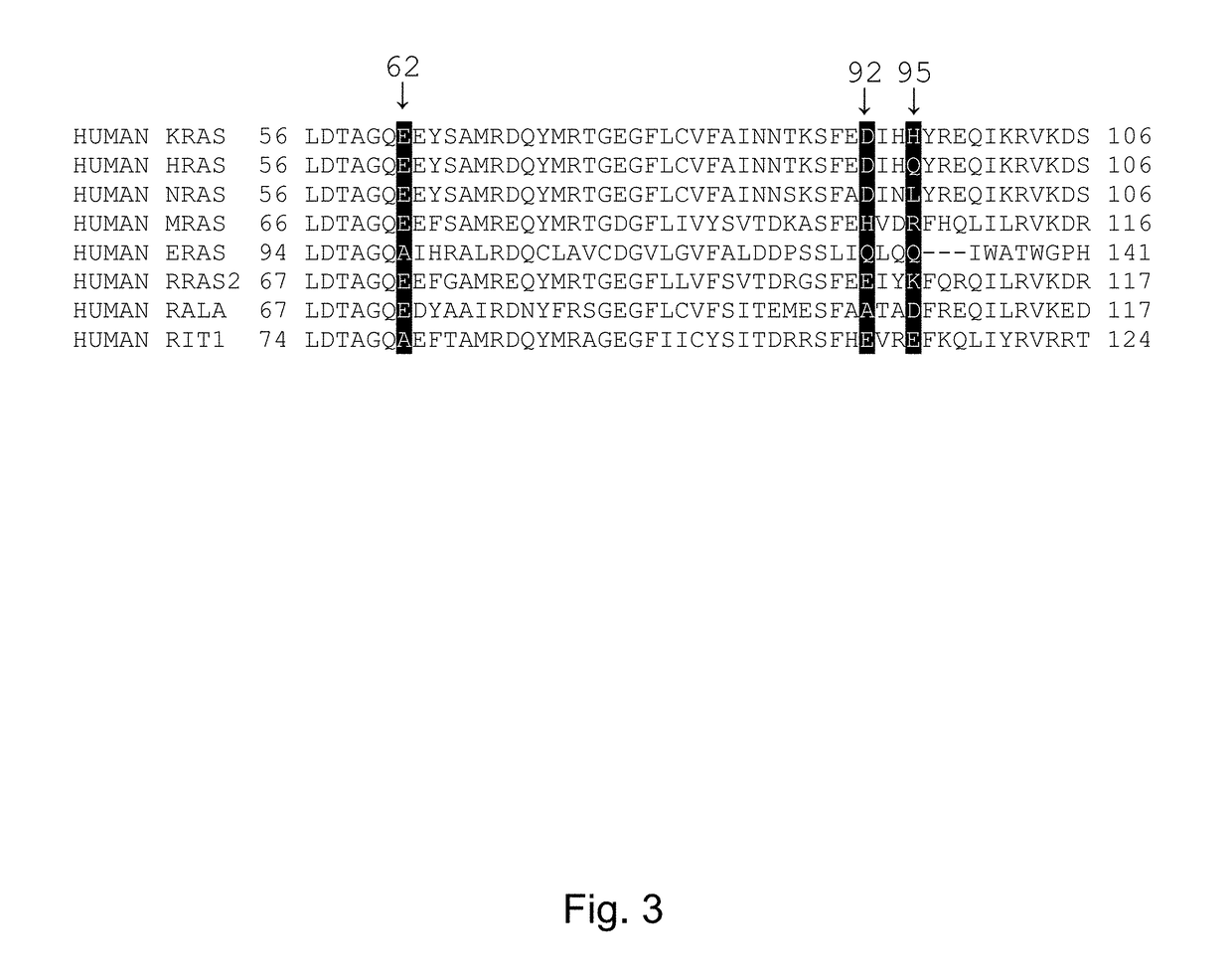Method for screening inhibitors of Ras
a technology of ras and inhibitors, which is applied in the field of screening inhibitors of ras, can solve the problems of unfavorable direct targeting of ras, unfavorable ras mutation treatment, and ineffective treatment of ras mutant tumors, and achieve robust and high throughput interrogation, inhibit ras function, and high throughput
- Summary
- Abstract
- Description
- Claims
- Application Information
AI Technical Summary
Benefits of technology
Problems solved by technology
Method used
Image
Examples
example 1
nt Protein Expression of RalA WT and RalA G23C
[0209]Hexahistidine-tagged recombinant human RalA (“hexahistidine” disclosed as SEQ ID NO: 49) (residues 11-183, either WT or G23C) was transformed into Escherichia coli (BL21 (DE)). After the bacterial grew to an OD(600) of 0.4-0.6 in Terrific Broth containing 30 mg / L kanamycin at 37° C., induction was carried out at 18° C. using 0.5 mM IPTG and growth was continued at 18° C. for about 18 h. The bacteria were harvested by centrifugation and the obtained pellet was either stored at −80° C. or used freshly for the subsequent steps.
[0210]The pellet was resuspended in bacterial protein extraction reagent (B-Per, Fisher Scientific) containing protease inhibitor cocktail (Pierce Protease Inhibitor tablets, EDTA free). The lysis reaction was clarified by ultracentrifugation, and additional lysis buffer (500 mM NaCl, 20 mM TRIS pH=8, 5 mM imidazole) was added along with 2 mM BME (final). The supernatant was incubated for 1 h with Co-affinity be...
example 2
Modification of Ras Mutants by Competition Probes
[0217]KRAS mutant proteins were produced with one substituted amino acid selected from E62C, D92C, and H95C and with either glycine at the 12 position (WT) or an additional mutation to aspartic acid at the 12 position (G12D) relative to SEQ ID NO: 1 when optimally aligned. These mutations are depicted on an X-ray crystal structure in FIG. 2. These mutants were tested for reactivity (e.g., covalent modification of the KRAS mutant) with a panel of competition probes that bind the Switch II binding pocket and covalently modify the substituted amino acid with appropriately placed electrophiles based on modeling / docking studies. Screening was carried out by time-of-flight (TOF) mass spectrometry on an Agilent RapidFire system. Significant reaction (>25% at 6 hours) was observed for at least one competition probe for five of the six mutants (Table 2). Competition probe reactivity with the G12D mutant or other 12 position mutants may be opti...
example 3
Modification of Ras and RAL Mutants by Competition Probes
[0219]RALA mutant proteins were produced with one mutation to cysteine at the 23 position (G23C) relative to SEQ ID NO: 8 when optimally aligned. KRAS mutant proteins were produced with one mutation to cysteine at the 12 position (G12C) relative to SEQ ID NO: 1 when optimally aligned. The RALA and KRAS mutants were tested for reactivity (e.g., covalent modification of the mutant) with a panel of competition probes that bind the Switch II binding pocket and covalently modify the substituted amino acid with appropriately placed electrophiles based on modeling / docking studies. One such inhibitor covalently bound to RAS (via G12) is depicted in FIG. 2. Screening was carried out by mass spectrometry on an Agilent RapidFire or ThermoScientific Q Exactive system.
[0220]
TABLE 3Covalent modification of Ras mutants by competition probesRate Constant (M−1s−1) forReaction with Indicated ProteinIDStructureRALA G23CKRAS G12CCP-00876CP-0095.8...
PUM
| Property | Measurement | Unit |
|---|---|---|
| temperature | aaaaa | aaaaa |
| temperature | aaaaa | aaaaa |
| wavelength | aaaaa | aaaaa |
Abstract
Description
Claims
Application Information
 Login to View More
Login to View More - R&D
- Intellectual Property
- Life Sciences
- Materials
- Tech Scout
- Unparalleled Data Quality
- Higher Quality Content
- 60% Fewer Hallucinations
Browse by: Latest US Patents, China's latest patents, Technical Efficacy Thesaurus, Application Domain, Technology Topic, Popular Technical Reports.
© 2025 PatSnap. All rights reserved.Legal|Privacy policy|Modern Slavery Act Transparency Statement|Sitemap|About US| Contact US: help@patsnap.com



